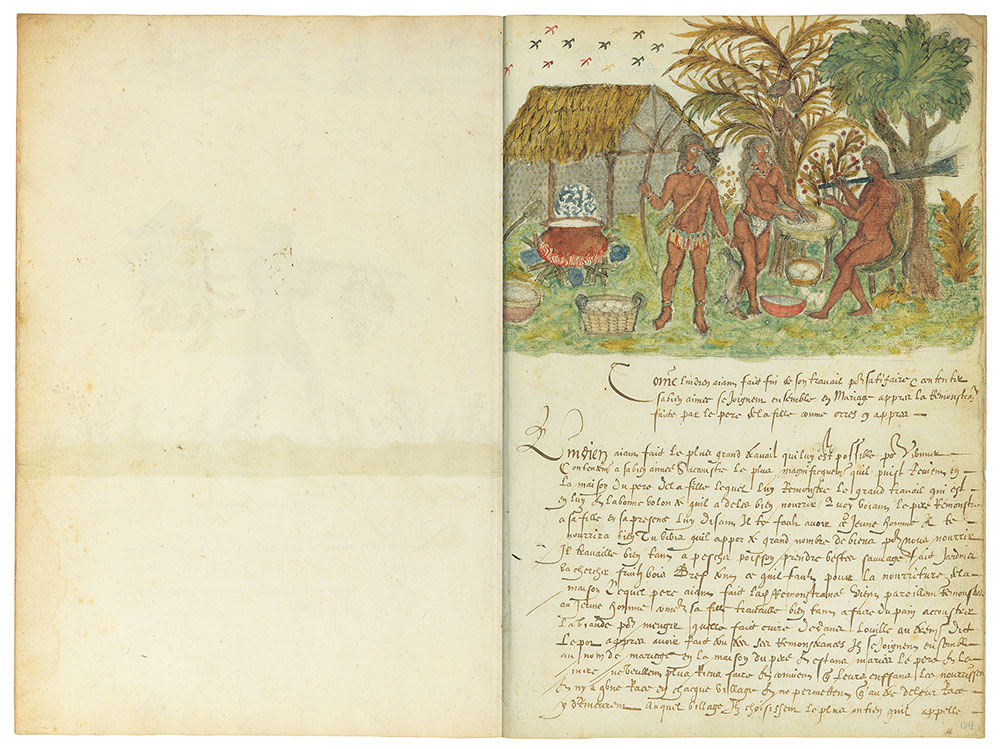
Histoire Naturelle des Indes
Illustrated manuscript
Bequest of Clara S. Peck, 1983
In 1983, The Morgan Library & Museum received, as the bequest of Clara S. Peck, an extraordinary volume whose beautiful paintings and descriptions document the plant, animal, and human life of the Caribbean late in the sixteenth century. Spaniards had already begun to exert influence over the indigenous people of the area when explorers from England and France arrived, among them Sir Francis Drake. The volume, known as the Drake Manuscript and titled Histoire Naturelle des Indes when it was bound in the eighteenth century, gives us a wonderful picture of daily life at the time of Drake's many visits to the region. Although Drake's connection to the manuscript is uncertain, he is mentioned on more than one occasion by the authors. Drake himself is known to have painted, but none of his work survives.
Contents: 199 images of West Indian plants, animals and human life, with accompanying manuscript captions written in late sixteenth-century French.
Medium: Most of the illustrations consist of a black chalk underdrawing and a combination of pen and brown ink with watercolor; on some images selected areas have also been glazed with a gum.
Binding: Bound or rebound in brown leather in the late 18th century.
Pagination: Penciled folio numbers (1–125) in lower right corner of each page were added by The Morgan Library & Museum. Folios 92v–93, 93v–94, and 95v–96 are fold-out leaves.
Come Lindien Aiant Faict Fin De Son Trauail Po[Ur] Satifaire Et Contenter Sa Bien Aimee Se Joignent Ensemble En Mariage Appres Las Remonstra[Nce] Faicte Par Le Pere Dela Fille Comme Orres Cy Appres (How the Indian, After Finishing His Work of Satisfying and Pleasing His Fiancée, Gets Married After a Demonstration Made By the Father of the Bride as You Will Hear Hereafter)
The Indian, having worked as much as possible to give pleasure to his fiancée, dresses himself as magnificently as he can and returns to the house of the father of the bride and points out to him the hard work he is capable of and the good will he has to nourish them well. Seeing this, the father demonstrates to the daughter in his presence, telling her, "You need this young man. He will feed you well. You see that he brings a lot of good things for us to eat; he works hard at fishing as well as at catching wild animals; he plants, gathers fruit and firewood, in short, everything needed to feed the whole house." After having made this demonstration, the father points out similarly to the young man how well his daughter works at baking bread and dressing meat which she will cook in the cask, also called pot. After all these demonstrations have been made, they are joined in marriage in the house of the father. When they are married, father and mother no longer want to work and customarily their children feed them. There is only one tribe in each village and they do not permit others, not from their tribe, to live in this village. They choose the oldest one whom they call
